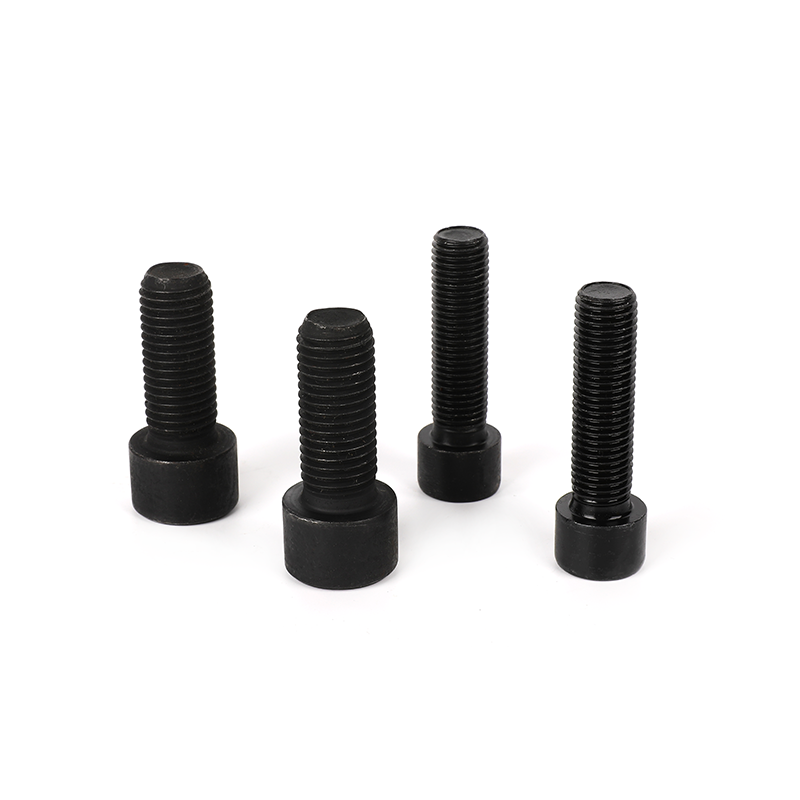Room 102, Building 13, Area A, Wanyang Zhongchuang Park, Ganyao Town, Jiashan County, Zhejiang China.

When using hexagonal head screws in high-load or vibration environments, it is crucial to ensure the reliability of the connection. Since high loads and vibrations can cause bolts to loosen, fail or be damaged, a series of effective measures need to be taken to improve the stability and safety of the connection.
For high-load and vibration environments, hexagonal head screws with higher strength grades must be used, such as 8.8, 10.9 or 12.9 bolts, which have higher tensile strength and shear strength and can better withstand large loads and vibrations.
When working in corrosive environments (such as moisture, salt spray, etc.), stainless steel, alloy steel or galvanized bolts can be selected. These materials have better corrosion resistance and can extend the service life of the bolts.
For example, surface treatment technologies such as galvanizing, phosphating, and coating can improve the corrosion resistance and wear resistance of the bolts and reduce the chance of damage in harsh environments.
When installing hexagonal head bolts, a torque wrench must be used to ensure the correct torque. Overtightening may cause the bolts to break or deform, while over-loosening may cause the bolts to loosen and reduce the firmness of the connection. According to the material and specifications of the bolts, select the appropriate torque value for tightening.
Make sure the preload of the bolts is strong enough to prevent them from loosening in a vibrating environment. Appropriate preload can effectively reduce bolt loosening and thread wear.
Using anti-loosening washers (such as nylon locking washers, double washers, wave washers, etc.) is an effective way to prevent bolts from loosening during vibration. They provide additional friction to ensure that the bolts do not loosen on their own.
Using nuts with anti-loosening functions (such as self-locking nuts, spring nuts, etc.), these nuts are designed to provide additional locking effect and effectively prevent bolts from loosening.

Applying thread lockers (such as chemical locking glues such as Loctite) on the threads can enhance the friction between the bolts and nuts to prevent loosening under vibration or high loads. Thread lockers have different strengths and can be selected according to actual conditions.
When designing bolt connections, consider the appropriate bolt spacing and number. Too few bolts may not be able to share the load, and too dense bolts may cause excessive local stress. Therefore, the design needs to be reasonably arranged according to the material, size and load requirements of the connected parts.
If the bearing capacity of a single bolt is not enough to meet high load requirements, consider using multiple bolt connections. By sharing the load, the force on a single bolt can be reduced, reducing the risk of loosening.
Especially in high-load and vibration environments, the tightening of the bolts needs to be checked regularly to ensure that they are not loose or worn. For equipment or machinery that vibrates frequently, it is recommended to tighten and check the bolts regularly.
Equipment such as stress sensors can be used to monitor stress changes in bolted joints. If abnormalities are found, maintenance should be carried out immediately to avoid connection failures.
In high-load or vibration environments, the use of flexible washers (such as rubber washers or elastic washers) can reduce bolt loosening caused by vibration. Washers can absorb certain vibration shocks and maintain the stability of the connection.
For higher strength requirements, metal washers can be selected. Such washers not only help to disperse pressure, but also improve the sealing and stability of the connection.
Ensure that the force direction of the bolts is correct when installing. Bolts should be subjected to tension rather than shear force, because tension usually has less effect on bolts than shear force. When designing, try to ensure that the force direction and force of the bolts are consistent to avoid loosening or breaking of bolts due to shear force.
In some extreme environments, the use of preload devices (such as tensioning bolt devices or tensioners) can apply a certain initial preload force between the connected parts, further improving the stability and vibration resistance of the connection.
The correct installation method, suitable locking devices, regular maintenance and inspection can greatly improve the stability and safety of bolted connections, thereby ensuring the long-term reliable operation of equipment or structures.

Fix anchorbolts include bolts, washers, nuts and 4PCS cylindrical shields. By tightening the bolts, the shields tubes expand and the components can be...
See Details
Flange bolts are specially used to tightly connect pipes and components with flanges. We produce flange bolts are solid t and durablethat, compling wi...
See Details
The Grade 8.8 black oxide full-thread hexagon socket bolts have an internal hex design and needs to be used with a wrench with a hex head. Its full th...
See Details
Grade 8.8 black oxide full-thread hexagon bolts is a very common fastener and requires a wrench or hex wrench to tighten it. Our hex head bolt meet th...
See Details
This product is made of high-quality carbon steel and undergoes a rigorous heat treatment process. It has high strength, good elasticity and toughness...
See Details
This 304 stainless steel plain full-thread hexagon bolt is a kind of fasteners made of high-quality stainless steel material and has corrosion resista...
See Details
This plain round flat head weld shoulder bolt is a fastener suitable for a variety of welding applications. Its flat head and round head design makes ...
See Details
This Grade 12.9 zinc plated countersunk head square neck plow bolt has the advantages of high precision, high operability, high strength, and high ten...
See Details